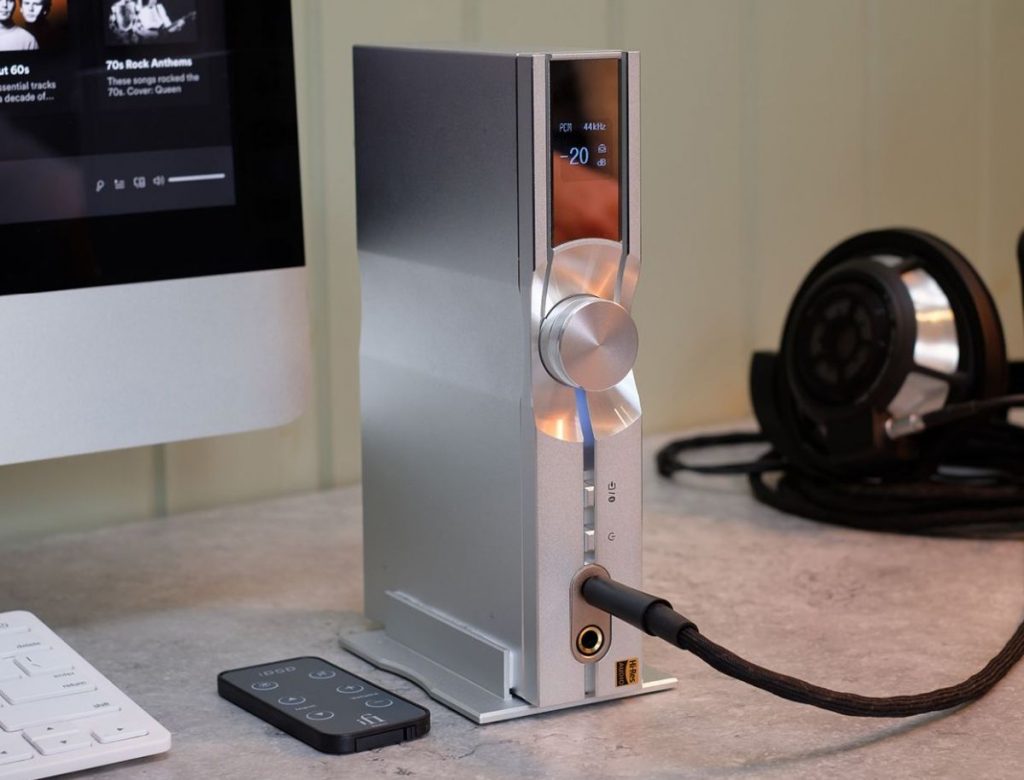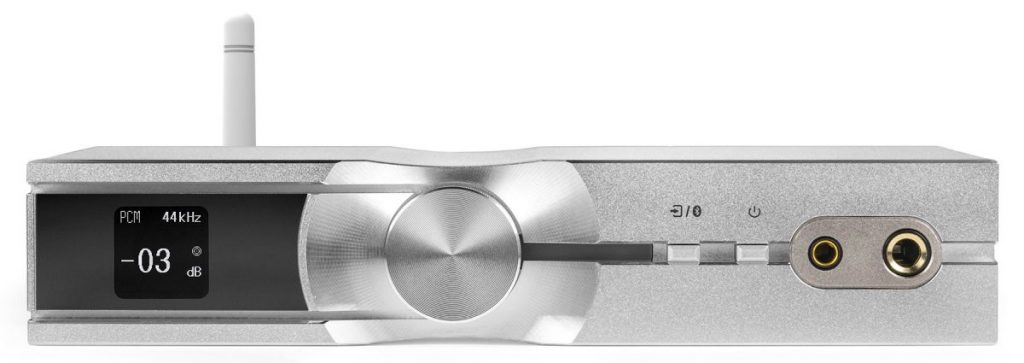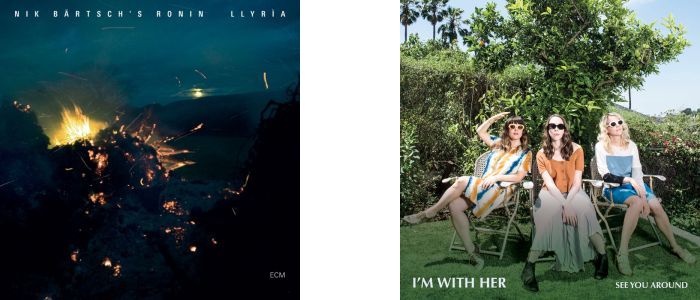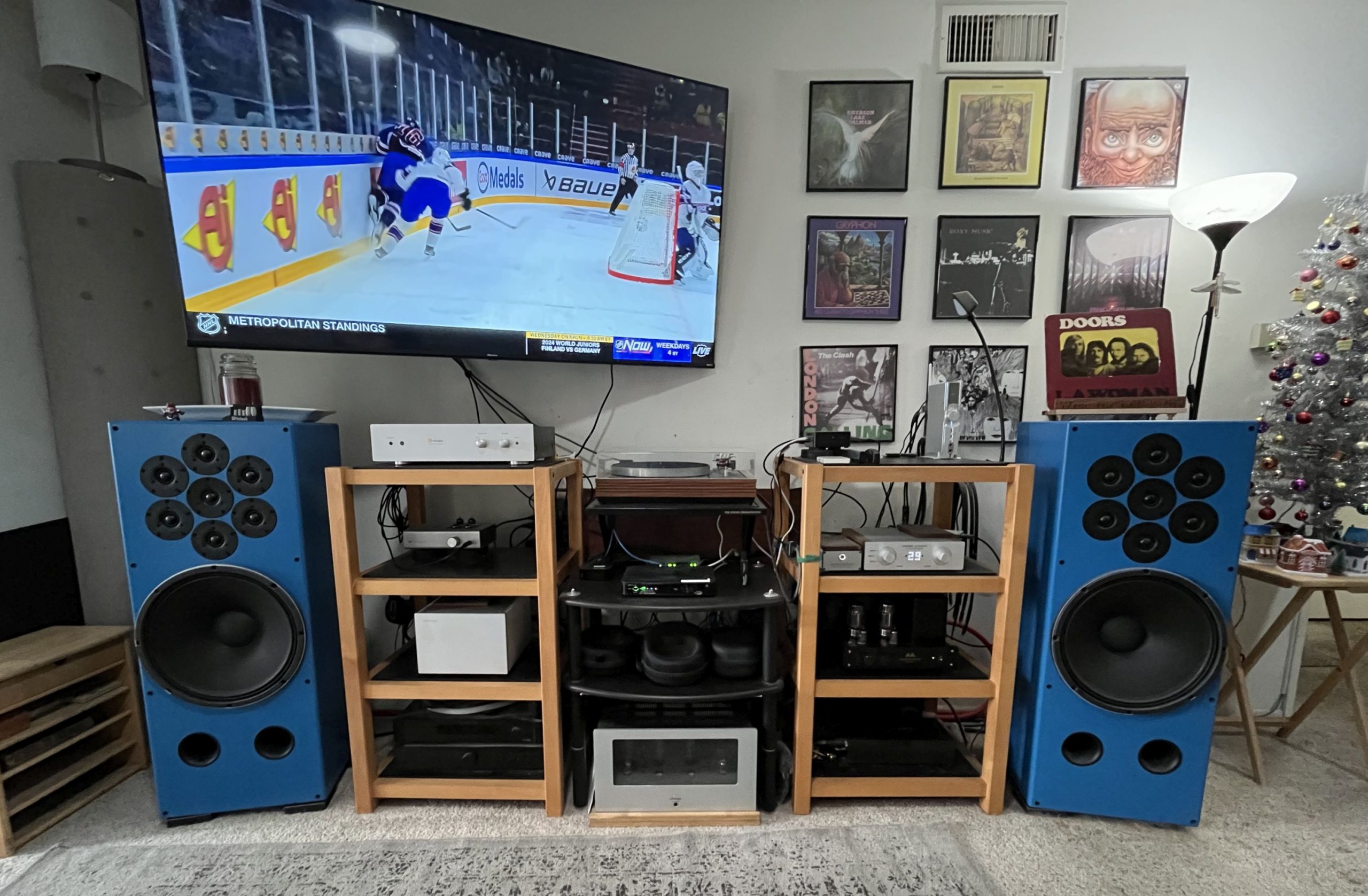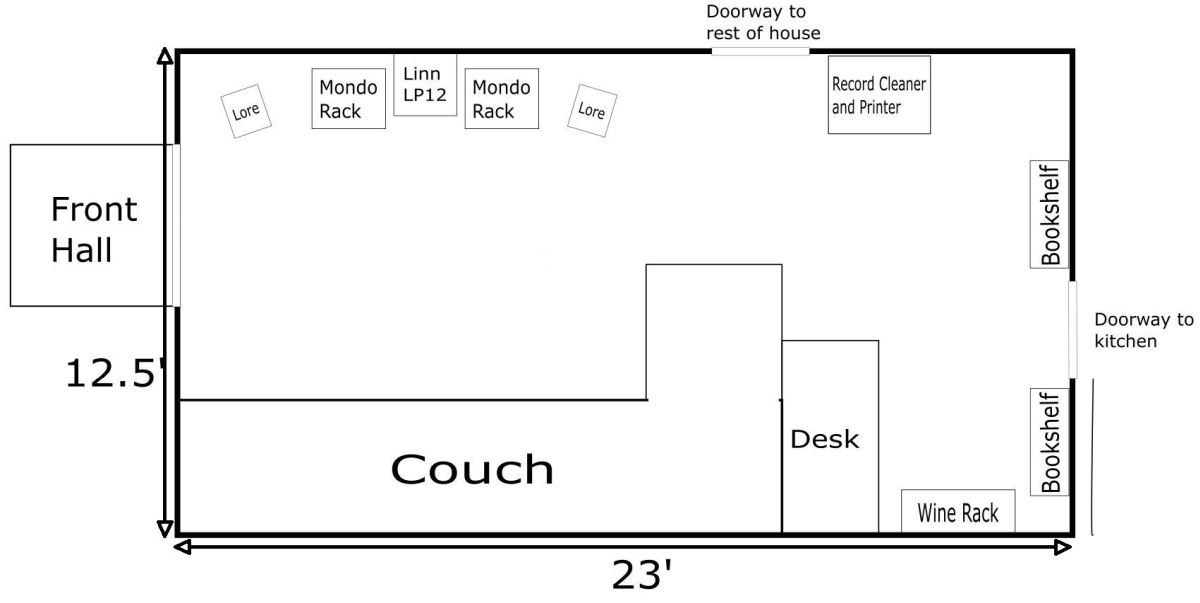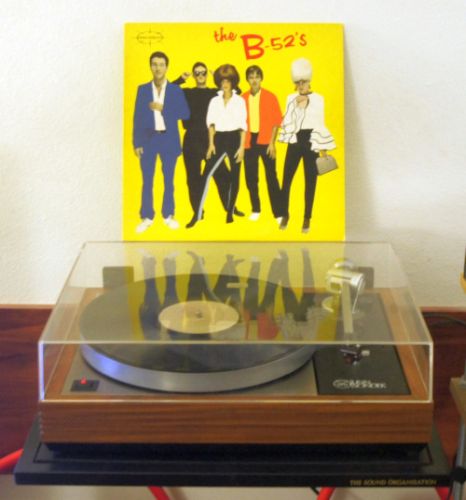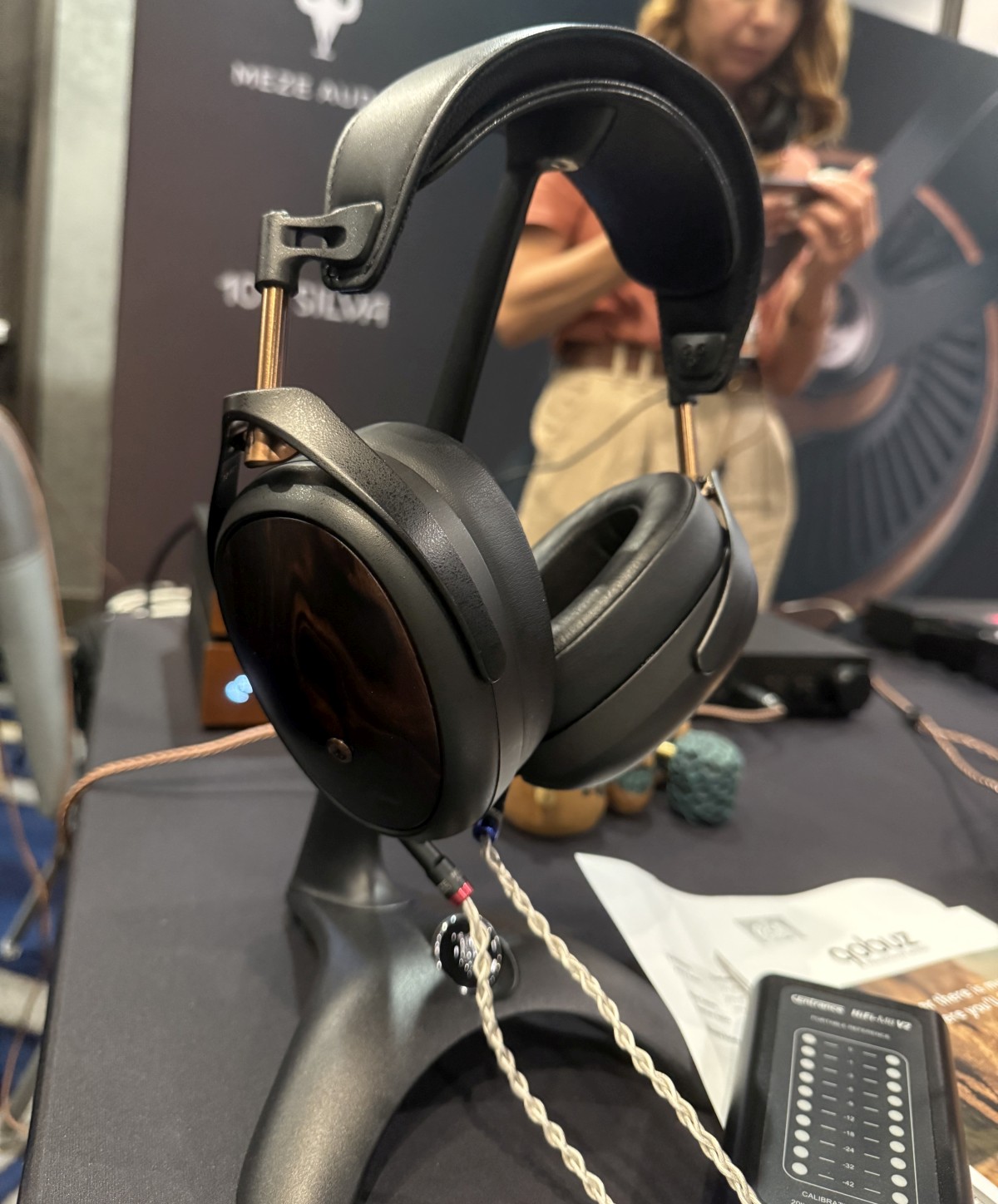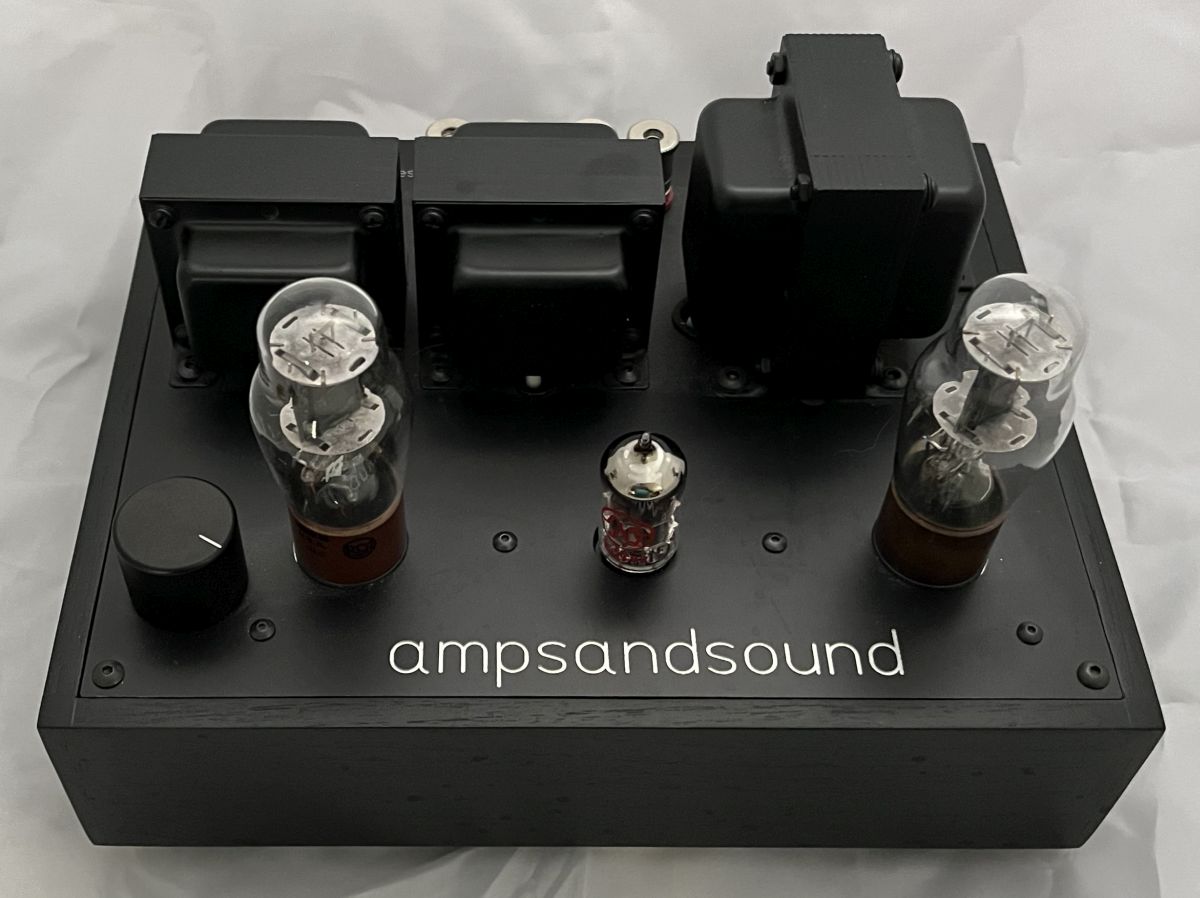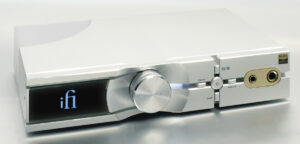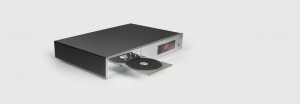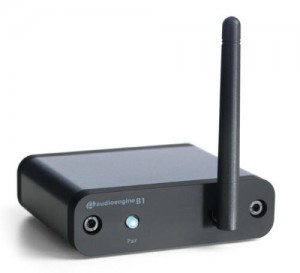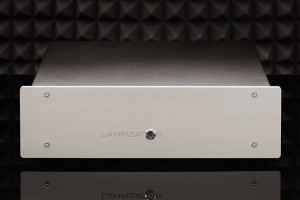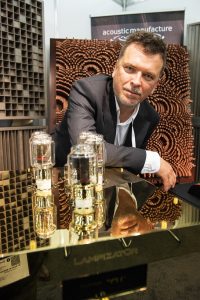Though I'm known among my audio friends as an analog and LP guy, I actually spend more time listening to digital music than my LP collection. Especially since I first signed up for Tidal in 2017, streaming has been my main source for listening to new music, and for hunting down all the old stuff I either no longer own, or was too foolish to buy when the LPs were new. Over the past year especially, where I've been working from home due to the pandemic, I have the opportunity to have the system running several hours every day, streaming from Tidal or Qobuz, or playing off of the 3 TB drive where I have my digital library of ripped CDs and high resolution downloads stored. I've really appreciated the sound quality I've been able to get while maintaining my ever-present high-value / low-cost philosophy.
I use a basic Windows 10 notebook (Samsung, i3, 4 GB RAM, the fifth notebook taking this spot in my system) as a music server, running JRiver Media Center 24 for stored files, and the Windows Desktop Apps for Tidal or Qobuz. For the past several years, I've used digital products from iFi Audio to handle DAC duties. I started with the original iFi Micro iDAC then upgraded to the Micro iDAC2. After a software upgrade gave the iDAC2 MQA Rendering capabilities, I really began to appreciate Tidal Masters.
Of course, being digital, things were never as easy or simple as they should be. First, I found that using the iFi iUSB power supply between the notebook and DAC made a substantial improvement in sound quality. Hard to describe that difference, but basically it was just a cleaner, clearer, more comfortable to listen to. Enough so that I've not tried a computer or any other DAC that wasn't improved by using it.
But then the iUSB3 came out and it improved the sound even more, and in the same way. Especially after I included the iFi Gemini Twin Head cable between the iUSB3 and the iDAC2. Added next was an iPurifier2, which at this point made a small, but definitely worthwhile step up, most in terms of long term listenability.
So for the past few years, my digital rig has been USB out of the notebook into:
- Audioquest Jitterbug
- Aural Symphonics Digital Standard xxv cable
- iUSB3
- Gemini twin Head Cable
- iPurifier2
- iDAC2
Please note, I hear no difference in my system between the $150 Aural Symphonics Digital Standard xxv USB cable and a $42 Straightwire USB Link I also use occasionally. I use the Aural Symphonics simply because it is longer and allows more flexibility in placing the iUSB3 power supply on my shelf. I do hear a significant difference (and improvement) using the iFi Gemini Twin Head cable between the iUSB3 and the DAC, as compared to using any other single head USB cable in that position. Also, the Audioquest Jitterbug is a very effective device at cleaning up USB noise on its own. In my case, with all the other iFi gear working with it, I can't really say I heard any additional improvement using it, but I leave it in the system anyway. It certainly doesn't hurt anything.
This fed into either a Burson Conductor Virtuoso for an active preamp, or a small DIY passive line-stage that is basically just a TKD 10K pot with two inputs and two outputs. Though the Burson had the upgraded ESS DAC module, I only used the DAC in that for the feed from a TV through its optical input, as I preferred the sound of the iFi stack over the Burson's USB input for my music server.
That high-resolution DAC system with DSD capability and MQA rendering, my digital stream from all three sources (stored files, Tidal, and Qobuz) has given me endless hours of enjoyable listening. I really hadn't thought about DACs too much recently, and was planning on spending the coming year focusing on LP related products and speakers. But when I contacted iFi about returning the iPhono3 after completing that review (HERE) they mentioned they had a new DAC that just came out, and asked if I was interested in reviewing that. When they explained what it was and its capabilities, I agreed and asked them to send it to me. A couple of weeks later the new iFi NEO iDSD arrived.
Unlike the Micro series I had been using, the NEO iDSD is a true desktop / main system product, and not viewed as a portable device. In a smart looking package about the size of a hard cover book, iFi has packed a great feature set. Compared to the Micro line I had been using, the first difference that made the biggest impact on my setup was the NEO iDSD having multiple inputs instead of being just USB; one each for USB, SP/DIF Coax, and optical TOSLINK. This meant the Burson DAC would not be needed. A fourth input was the Bluetooth connectivity using Qualcomm's new QCC5100 Bluetooth processing IC. Although I wasn't too interested in Bluetooth, I could see where for some people it would be important. For example, in my son's system, his primary source of music (other than his turntable) is Spotify or Tidal streamed from his phone or iPad over the Bluetooth connection on his ELAC integrated amp. He and his fiancé love it.
On the output side one surprise was the inclusion of balanced outputs along with the standard RCA single ended connections. Neither of my line stages have balanced inputs, so I used the RCA connections throughout the testing period. If you have a preamp with balanced inputs, this could be significant feature.
Another surprise was the "purist" design of the DAC itself. Other DACs from iFi, like the iDAC2 or the new Micro iDSD Black Label, have a variety of processing options and choices you get to select from; things like "X-Bass" and "3D+Holographic." The NEO iDSD has none of these options. As iFi puts it, the NEO iDSD is "a purist design—no DSP, no digital filter selection and no change in analogue playback." The only filter used is the "Gibbs Transient Optimized Digital Filter," which you can read about on the iFi website (HERE). Like other iFi DACs, they use a Burr-Brown True Native® chipset, and in the NEO iDSD they use a 16-core, XMOS microcontroller to processes the data from USB and S/PDIF digital inputs. More on that later.
Of course all current high-resolution formats are supported. PCM up to 32-bit/768kHz and DSD up to DSD512 (Octuple-rate). It will also do double-DXD files, though I didn't have any in that format to try. Plus, and this is a big plus if you listen to Tidal, the NEO iDSD is a full MQA Decoder / Renderer, allowing Tidal to stream in pass-through mode and ensuring the full benefit of MQA.
The NEO iDSD is considered a DAC/AMP for head-fiers, and has a pretty capable headphone amp built in. It has both a standard 6.3 mm (1/4 inch) and a 4.4 mm balanced headphone jack on the front. Since this is a balanced design, iFi recommends using the balanced headphone jack. I don't have any headphones set up for balanced connection, so I couldn't compare the outputs. Plugging a headphone in through either jack mutes the output from the RCA or balanced connectors on the back.
The large volume knob on the front (referred to as the "multi-function knob" in iFi's literature) controls volume, mute (by quickly pressing it) and the brightness of the display. The output can be set to either be fixed, bypassing the volume control for use with a preamp or integrated amp, or variable, so the volume control works on the RCA and Balanced outputs too. Volume control is purely analog and not a digital control. Though the literature indicated that if powered down, the NEO iDSD would start up in the same mode as it was last used, I found that after powering down, it always started up in variable mode. That may be a safety feature actually, in case you have the unit plugged directly into a power amp. It is quick to switch back to fixed mode if needed on startup.
The NEO iDSD uses a 5 VDC power supply and comes with an iFi iPower wall wart (available separately for other devices for $49). I was surprised it didn't come with an iPowerX ($100) like the iPhono3 did. I guess that might be an upgrade to try later. As I always do when trying a new DAC, I started off without any additional add-ons, and left the Jitterbug, iPurifier2 and iUSB3 out of the system.
There is a small remote control included. It handles all the necessary functions, volume, mute, input selection, and the brightness of the display. Being very small, slim, and black, I felt it would be too easy to lose, so I attached a bright red loop to it made from a craft-oriented pipe cleaner. That made it easy to spot and keep track of, so the first time it slid between the cushions of the couch it was also easy to grab hold of and retrieve. The remote uses a 2025 style battery, and surprisingly did not come with one. They are commonly found at your local pharmacy or supermarket.
The NEO iDSD uses the same Windows driver as the Micro iDAC2 and most other iFi DACs, so my notebook/music server was already set to play with it. When I first set the NEO iDSD up in my system I plugged the USB out from the notebook into the USB input on the DAC and everything worked just fine. I reset the Tidal Desktop App for pass-through MQA to let the NEO iDSD handle MQA decoding. I set the output to fixed and plugged the single-ended output into one of the two line-level inputs of the Burson Conductor Virtuoso. And, maybe surprisingly, maybe not, everything worked fine. So I let it stay on to warm up for the rest of the day, playing at low volume just to get some time on it. So good so far.
After twenty four hours of warm up and playing at low volume, I was ready to sit and start listening for real. At this time I was using the Burson preamp/power amp combination to drive my Tekton Lores. This setup gives an extremely crystal clear sound excelling in transparency and detail, without sounding dry or clinical. It didn't take long to realize that the NEO iDSD was a definite step up from the older Micro iDAC2. Initially, listening to Jack Johnson's In Between Dreams (Tidal Master and again Qobuz 24/96) I noticed his voice seemed more natural, its presence in the room sounded more real. The bass line in the opening track "Better Together" had a little more weight behind it. In fact, those characteristics held up through the entire album. I was a little surprised how similar the Tidal MQA and Qobuz 24/96 streams sounded, especially since when using the iDAC2, the Qobuz stream was superior, if only by a small amount.
After about a week of listening like this and being pretty impressed, I swapped the Burson Timekeeper Virtuoso amp out for my lovely sounding Antique Sound Labs MG-SI15DT-S, recently fitted with JJ ECC803 Long Plate tubes to replace the aging JJ 12AX7 tubes previously installed. That tube upgrade was a big step up for that amp in terms of the sheer physicality of its soundstage and imaging characteristics. I've had that amp for about eighteen years and it never ceases to amaze me with the level of refinement in its overall sound. I also decided that since my listening habits are different based on whether I'm listening to LP or digital, I should try something different here. I switched the NEO iDSD to variable output and plugged into one input on the ASL amp, and ran my iPhono2 phono stage into another input through my DIY passive linestage. This way I could control volume with the iFi remote when listening digitally. I tend not to need a remote when listening to LPs, as I set the volume and then leave it until the record is done. One thing to consider with the ASL amp is that it really isn't an "integrated amp" as much as a power amp with three inputs and a simple volume pot on the inputs. The amp simply sounds best with the volume pot all the way up, and I've always had it that way, as a basic power amp.
After a few more days of listening I felt I could get even more out of the NEO iDSD, and figured it couldn't hurt to put the Jitterbug/iPurifier2/iUSB3 combo back in system between the notebook and the USB input of the DAC. I still am convinced that devices like this don't really affect the DAC as much as they are cleaning up electrical noise in the signal from the notebook itself. Sending a superior signal to the DAC allows it to do its job more effectively. As I mentioned, I've used several notebooks and more than a dozen USB DACs, and every combination has been improved by these USB devices.
That proved to be the case here too. What can I say other than inexpensive notebook computers maybe aren't the best choice for use as a music server, and are too electrically noisy inside to get by without help. Maybe it's time for me to look into a real, dedicated music server or streamer.
So finally, with the NEO iDSD plugged directly into my power amp, bypassing the preamp and getting a supremely clean USB signal from the notebook source, I was able to hear the device at its best. Looking at each of the three sources of files available to me, here's what I heard.
Files stored on my server's external USB hard drive
I have a mix of 16- and 24-bit PCM files from 44.1 to 192kHz and about 1500 single-bit dsf files (including a handful of double and quad dsf files). I use JRiver Media Center 24 as the software for playing these files. I have JRMC 26 downloaded, but haven't installed it yet. It uses ASIO in exclusive mode and uses Bitstreaming to send DSD files. I enjoy the sound from this setup immensely, and that has been the main reason I've stuck with it. Plus, I love the functionality of the JRiver software. I have numerous custom "Smartlists" created that auto-populate and let me pick files to listen to. I have one, "Files not played in a long time" that only plays tracks that have either never been played at all, or haven't been played in the last five years. It keeps me from neglecting music that I've had for a long time. The other, that I use a lot while listening for review purposes, simply creates a random list of tracks that take no more than one hour to go through. It has selected as few as three files (prog rock epic songs) and as many as thirty. This smartlist tells me a lot about how well the system plays music on a general basis, rather than focusing on a collection of test tracks.
I loved listening to my collection through JRiver and the NEO iDSD. FLAC or Apple Lossless files ripped from my CD collection sound better than I ever heard from the disks themselves, and I had I a pretty nice CD/SACD player (a Marantz SA-8001 that was about $1000 when I got it many years ago). There was zero harshness, great levels of detail, and a soundstage that was wide, deep, and fully fleshed out. I've listened to over 500 tracks from this collection with the NEO iDSD, mostly on shuffle rather than complete albums.
Some highlights include Laurie Anderson's "Born, Never Asked" from Big Science, where the transparency of the track far exceeded expectations and any memory of past playing. Anderson's violin came through with a sense of emotion not normally associated with her music, and that I've only heard before when playing the original LP.
Listening to the DSF files extracted from the SHM SACD disk of Tom Wait's Rain Dogs, the sense of space and scale in the soundstage was excellent. Everything was there in its own place, but all part of a coherent presentation. On the DSF file of Peter Gabriel's "Lay Your Hands On Me" from his fourth album (PG4) the Tony Levin bass line had such clarity, depth, and power that none of my other DACs could match, and the combination of Jerry Marotta's drums and Morris Pert's timbales just jumped with tremendous force and energy.
The same could be said for 24-bit PCM files. Overall, there wasn't an area or sound reproduction that wasn't improved over the iDAC2. And never a single glitch in playback.
Tidal HiFi and Master MQA
This was probably the biggest improvement in my system. My two other MQA capable DACs (the iDAC2 and the Audioquest Dragonfly Black) are both MQA Renderers, but not MQA Decoders. They require the Tidal Desktop App to do the decoding, and therefore only get to the "second unfold" of the MQA file. With the NEO iDSD being a decoder and renderer, I could set the app to "passthrough MQA" allowing the DAC to handle everything and achieving the "third unfolding" of MQA for maximum resolution.
With MQA (from the MQA web site):
The Decoder - The first unfold recovers all the direct music-related information. Output is 88.2kHz or 96kHz.
The Renderer - when paired with a core decoder, can complete the final unfold and deliver a fully decoded MQA experience.
The Decoder/Renderer - a full MQA Decoder unfolds the file to deliver the highest possible sound quality. At this level of playback, you are hearing what the artists created in the studio—with precise file and platform-specific DAC compensation and management.
Seeing MQA 192kHz on the display let me know it was working. Hearing Tidal Master files clearly outperform the CD rips and even most of the 24-bit files on my hard drive showed me it was worth it.
The Master stream of the Nik Bärtsch's Ronin album Llyria just oozes with atmosphere and depth. The Master stream of I'm With Her's album See You Around is a perfect example to show that digital and streaming are not something to be feared by audiophiles. Great music, recorded beautifully and streamed to sound simply wonderful.
Qobuz
Why do I have a Qobuz account, too? Simply put, Qobuz sounds wonderful and has some of the music I want to listen to in 24-bit that Tidal doesn't have in MQA. More importantly, I need both Tidal and Qobuz, just because there is music on each that I want to hear that isn't on the other. Plus, although neither has a true advanced search function, Qobuz lets me refine the search and lets me do things like search by label. I love this. I spend a fair amount of time digging through the catalogs from ECM, Ramseur, Rounder, and Sugar Hill. Of course if there is something I like enough, and it's available on LP, I'll go to the record label's or the artist's website and order the LP directly from them.
Before putting the NEO iDSD in my system I probably split listening 60/40 from Qobuz / Tidal, as Qobuz sounded better. Since installing the NEO iDSD, it is probably more of a 50/50 split. If I want to hear something, I'll check one service, and if they don't have it in high resolution, I'll check the other one. I don't really hear a difference between them on 16-bit CD quality streaming. Then it is just about who has what I want to hear.
But, having just said all that, the improvement in sound that the NEO iDSD brought to my system was consistent when streaming from Qobuz, too. Everything was just clearer, cleaner, more filled in, and more spacious. I still start up one or the other depending on what I'm looking for and which I think will have it in hi-res. Qobuz seems to have more music in 24-bit than Tidal.
Oh wait, what about the headphone amp? Glad you asked. With most of my headphones, Meze 99 Classic and 99 Neo, 1More Triple Driver Over ear, and new Beyerdynamic DT770 Studio 80 ohm headphones I won in a give-away on Beyer's Facebook page, the headphone amp out of the standard 6.3 mm jack was quite nice. Not at all harsh, very easy on the ears, and quite extended with deep powerful bass. It couldn't really drive my 23-year-old 600 ohm Beyerdynamic DT770 Pro headphones, but few amps do those justice. My first generation Schiit Valhalla sounds thoroughly wonderful with those headphones. So as it stands, if I am listening to digital I use one of my headphones compatible with the NEO iDSD and am very happy. If listening to LPs, my DIY linestage has a fixed level output to feed the Schiit and I use the old DT770 Pro. Best of both worlds.
Any issues you ask?
Surprisingly, not really. For some reason I can't explain, for the first two weeks I couldn't get Qobuz to play above 96kHz. But then, suddenly I saw some known 192kHz tracks displaying 192 instead of 96, and it hasn't been an issue since. No real issues with Tidal at all. In fact, the only concern so far has been when playing on shuffle off my hard drive or Tidal, whenever the format or resolution changes, there is a slight click audible. I'm sure will get resolved soon, as I haven't heard that as an issue in my system with any other software or hardware in several years.
End result of all this was that having the NEO iDSD in my system was beneficial in all key areas. Sound quality was definitely a step up from my previous DACs, and in ways that I hadn't taken as areas the older iDAC2 was deficient in. My system could be simplified; removing an active $1900 preamp and a $350 DAC while replacing them with one $699 device and improving sound quality substantially was my kind of deal. Now all I need to do is replace my notebook with a fanless, quiet mini PC or dedicated music streamer and my digital source will be set for a while. Not only is the NEO iDSD highly recommended, I'm actually spending my own money on it and buying the review sample.
NEO iDSD
Retail: $699
iFi Audio
For full published specifications, please check the iFi Audio web site.




